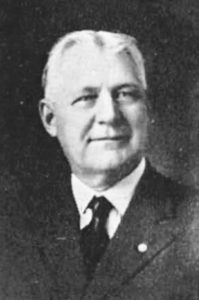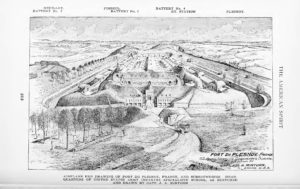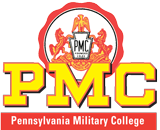 After Commencement, Joseph Minturn returned to Indianapolis and opened a wood carving business, having learned the machinist trade before he entered PMC. Wood carving became nearly obsolete when photo-chemical engraving was introduced and Minturn decided to enter the Indiana Law School. He was admitted to the bar in 1895 and began a successful career in patent law. In 1916, he founded the Indiana Society of Mayflower descendants after learning that he was a direct descendant of John Howland, one of the passengers on the Mayflower.
After Commencement, Joseph Minturn returned to Indianapolis and opened a wood carving business, having learned the machinist trade before he entered PMC. Wood carving became nearly obsolete when photo-chemical engraving was introduced and Minturn decided to enter the Indiana Law School. He was admitted to the bar in 1895 and began a successful career in patent law. In 1916, he founded the Indiana Society of Mayflower descendants after learning that he was a direct descendant of John Howland, one of the passengers on the Mayflower.
In response to advertisements in the local papers in 1917 to join the Officer’s Training Camp at Fort Benjamin Harrison and his own sense of duty, Minturn applied and was ordered to report at once. He registered, was given a thorough medical exam and was pronounced “sound and all right, but over-age.” He was then sworn in. Within weeks, Minturn was honorably discharged from the Army because of his age (he was 56 at the time). He left Fort Harrison and immediately traveled to Washington, D.C. There he hoped to receive a special dispensation from President Woodrow Wilson. Despite his unsuccessful efforts to acquire Congressional support from the Indiana delegation, Vice-President Thomas R. Marshall, a fellow Hoosier, came to his aid by contacting the Secretary of War. Minturn received new orders to re-enlist at Fort Harrison. After he completed his training, Minturn was commissioned as a second lieutenant in the Quartermaster Corps and ordered to Camp Taylor, in Kentucky.
At the start of World War I it became apparent that, because of advances in surveillance, there was a urgent need for specialists, called camouflers, who could fool the enemy through ingenious perspective illusions. Because of his ability to sketch and help make large-scale backdrops, Minturn was promoted and transferred to the Engineer School and attached to the 309th Engineers of the 84th division. In October, 1918, Minturn went to France with the 309th. There he was ordered to the A.E.F. Army Specialist School at Langres, France. He became an instructor in camouflage and military sketching. In 1919, the Army Schools were closed and Minturn was transferred to A.E.F. Headquarters. There he continued his work of illustrating manuals. In June, he returned to America and was discharged. He then returned to Indianapolis.
In 1920, Minturn and six other Indianapolis men who had served in the War founded The Service Club of Indianapolis. This group held regular lunch meetings to maintain the “bonds of friendship” they had formed during the War. The only requirement was that members had to have seen service in the Army, Navy or Marine Corps. In 1921, the story of Minturn’s war experiences along with many of his own illustrations were published in “The American Spirit.” He remained active in Indianapolis for many years and died after a short illness in 1943.


